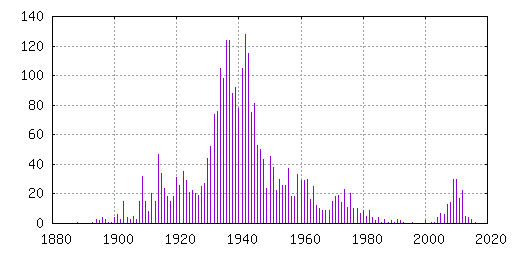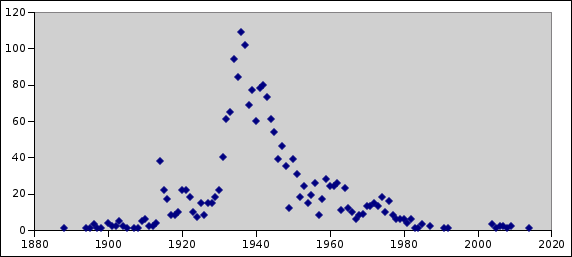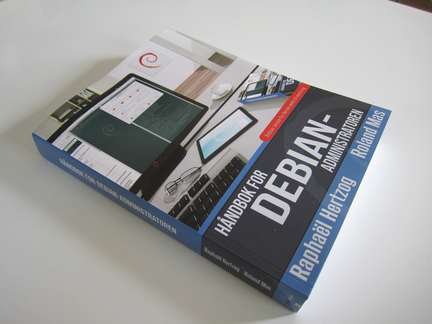The
Nikita
Noark 5 core project is implementing the Norwegian standard for
keeping an electronic archive of government documents.
The
Noark 5 standard document the requirement for data systems used by
the archives in the Norwegian government, and the Noark 5 web interface
specification document a REST web service for storing, searching and
retrieving documents and metadata in such archive. I've been involved
in the project since a few weeks before Christmas, when the Norwegian
Unix User Group
announced
it supported the project. I believe this is an important project,
and hope it can make it possible for the government archives in the
future to use free software to keep the archives we citizens depend
on. But as I do not hold such archive myself, personally my first use
case is to store and analyse public mail journal metadata published
from the government. I find it useful to have a clear use case in
mind when developing, to make sure the system scratches one of my
itches.
If you would like to help make sure there is a free software
alternatives for the archives, please join our IRC channel
(
#nikita on
irc.freenode.net) and
the
project mailing list.
When I got involved, the web service could store metadata about
documents. But a few weeks ago, a new milestone was reached when it
became possible to store full text documents too. Yesterday, I
completed an implementation of a command line tool
archive-pdf to upload a PDF file to the archive using this
API. The tool is very simple at the moment, and find existing
fonds, series and
files while asking the user to select which one to use if more than
one exist. Once a file is identified, the PDF is associated with the
file and uploaded, using the title extracted from the PDF itself. The
process is fairly similar to visiting the archive, opening a cabinet,
locating a file and storing a piece of paper in the archive. Here is
a test run directly after populating the database with test data using
our API tester:
~/src//noark5-tester$ ./archive-pdf mangelmelding/mangler.pdf
using arkiv: Title of the test fonds created 2017-03-18T23:49:32.103446
using arkivdel: Title of the test series created 2017-03-18T23:49:32.103446
0 - Title of the test case file created 2017-03-18T23:49:32.103446
1 - Title of the test file created 2017-03-18T23:49:32.103446
Select which mappe you want (or search term): 0
Uploading mangelmelding/mangler.pdf
PDF title: Mangler i spesifikasjonsdokumentet for NOARK 5 Tjenestegrensesnitt
File 2017/1: Title of the test case file created 2017-03-18T23:49:32.103446
~/src//noark5-tester$
You can see here how the fonds (arkiv) and serie (arkivdel) only had
one option, while the user need to choose which file (mappe) to use
among the two created by the API tester. The
archive-pdf
tool can be found in the git repository for the API tester.
In the project, I have been mostly working on
the API
tester so far, while getting to know the code base. The API
tester currently use
the HATEOAS links
to traverse the entire exposed service API and verify that the exposed
operations and objects match the specification, as well as trying to
create objects holding metadata and uploading a simple XML file to
store. The tester has proved very useful for finding flaws in our
implementation, as well as flaws in the reference site and the
specification.
The test document I uploaded is a summary of all the specification
defects we have collected so far while implementing the web service.
There are several unclear and conflicting parts of the specification,
and we have
started
writing down the questions we get from implementing it. We use a
format inspired by how
The
Austin Group collect defect reports for the POSIX standard with
their
instructions for the MANTIS defect tracker system, in lack of an official way to structure defect reports for Noark 5 (our first submitted defect report was a
request for a procedure for submitting defect reports :).
The Nikita project is implemented using Java and Spring, and is
fairly easy to get up and running using Docker containers for those
that want to test the current code base. The API tester is
implemented in Python.
 I've so far identified ten sources for IMDB title IDs for movies in
the public domain or with a free license. This is the statistics
reported when running 'make stats' in the git repository:
I've so far identified ten sources for IMDB title IDs for movies in
the public domain or with a free license. This is the statistics
reported when running 'make stats' in the git repository:
 I expect the relative distribution of the remaining 3000 movies to
be similar.
If you want to help, and want to ensure Wikipedia can be used to
cross reference The Internet Archive and The Internet Movie Database,
please make sure entries like this are listed under the "External
links" heading on the Wikipedia article for the movie:
I expect the relative distribution of the remaining 3000 movies to
be similar.
If you want to help, and want to ensure Wikipedia can be used to
cross reference The Internet Archive and The Internet Movie Database,
please make sure entries like this are listed under the "External
links" heading on the Wikipedia article for the movie:

 My monthly report covers a large part of what I have been doing in the free software world. I write it for
My monthly report covers a large part of what I have been doing in the free software world. I write it for  I finally received a copy of the Norwegian Bokm l edition of
"
I finally received a copy of the Norwegian Bokm l edition of
"